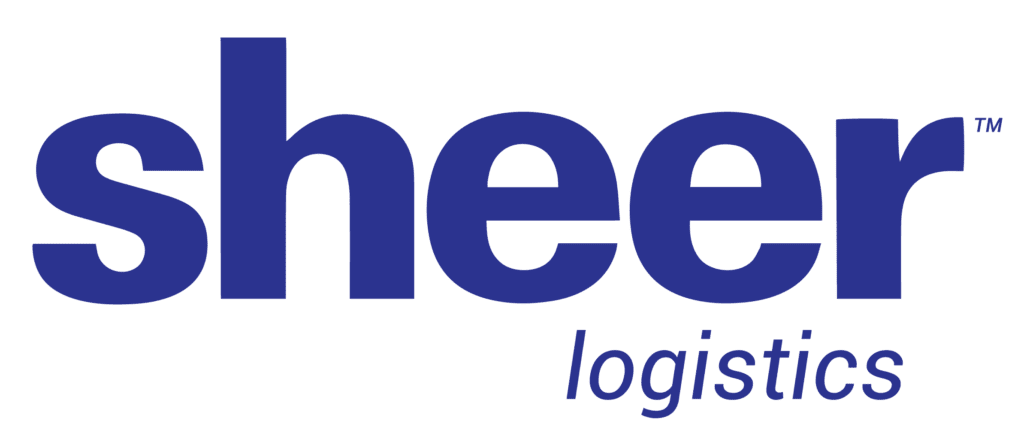Key Takeaways
Other than the unseasonal cold, April 26, 1956, was a day like many others in Port Newark, NJ. Little did the longshoreman working the docks that day realize that they were party to a historic event. It was on this day that the SS Ideal X, a converted World War 2 oil tanker ship, set forth on its maiden voyage in its new role as a container ship. Ideal X carried 58 containers that day, from Port Newark, NJ to Port of Houston, TX, where trucks were waiting to be loaded*. From these humble beginnings, the global supply chain, with all its inherent challenges and complexities, was born.
Today’s logistic landscape is more complex than ever. Third-party logistics providers (3PLs) and fourth-party logistics providers (4PLs) arose in response to the myriad challenges shippers face, whether they are seeking trusted domestic transportation partners or orchestrating a global supply chain. In this blog post, I will outline the key differences between the services and solutions offered by 3PLs and 4PLs** and share insights from more than 30 years of experience in logistics and supply chain to help you determine which solution is the best choice for your business needs and objectives.
*To learn more about the fascinating history and impact of containerization, check out The Box: How the Shipping Container Made the World Smaller and the World Economy Bigger by Marc Levinson
**There are multiple levels of logistics service providers, including first-party logistics providers, second-party logistics providers and even fifth-party logistics providers. To learn more about these logistics service models, please click here and read my post “What Is A 4PL?”
What is a 3PL?
Broadly speaking, 3PL (third party logistics) can refer to any entity other than the shipper (the first party) and the carrier (the second party) that provides a logistics or supply chain service on behalf of the shipper. The carrier can also benefit from a relationship with a 3PL, which I will explore further below.
There are three main entities involved in facilitating the movement of a shipment from its origin to its destination: (1) the shipper (the manufacturer or owner of the goods to be transported); (2) the carrier (the trucking company responsible for hauling the goods); and (3) the 3PL, often referred to as a broker, serving as an intermediary between the shipper and the carrier. While this is a simplified definition, it’s worth noting that a trucking company (an asset-based carrier) might also have its own in-house 3PL or freight brokerage arm. Shippers, despite owning a fleet of trucks, may seek additional support when their transportation needs surpass the capacity available within their own assets. Additionally, the term “3PL” can encompass various services, including those provided by warehouse/distribution providers, freight consolidators, and freight forwarders. At its core, 3PL broadly refers to any third-party entity delivering logistics and/or transportation services that is distinct from the shipper or the carrier.
Core Services Offered by 3PLs
While 3PL is sometimes used as shorthand for “freight broker,” in reality, 3PLs offer a wide range of services to help shippers manage nearly every aspect of their logistics and supply chain operations. According to a recent report by Astute Analytica, the global 3PL market was valued at $1.1 trillion in 2022 and is expected to grow to more than $2.3 trillion by 2031.
Transportation
There’s a reason why many people instantly think of transportation when they hear the term “3PL.” According to the Astute Analytica report, over the road transportation will account for 44% of total 3PL revenue by 2031. Due to the fragmented nature of the trucking industry, 3PLs play a critical role in connecting shippers with carriers. Just how fragmented is trucking? Consider that of the more than 750,000 active US motor carriers, 95.8% operate 10 or fewer trucks. Many of these trucking companies are owner/operators who lack the staff or resources to call on shippers (especially large shippers) and solicit their business; nor do shippers want to call hundreds or thousands of different trucking companies when they need to arrange for transportation. This is where 3PLs step in, acting as intermediaries between the shipper and carrier, while taking into account a myriad of variables including the commodity, equipment type, service record, length of haul, years in service, age of fleet, safety ratings, shipping rate, and much, much more to ensure that the shipper gets the right truck at the right time, at the best possible price.
Maintaining Carrier Relationships
3PLs provide a host of services beyond simply booking a truck from point A to point B. In order to provide their core service, 3PLs must maintain relationship with a vast network of carriers. This includes dedicating team members to seek out and build relationships as well as continuously monitoring and scorecarding carrier performance, to ensure that desired service levels are maintained. 3PLs also mitigate risk by verifying carrier credentials, insurance coverage, and regulatory requirements. This is particularly important when it comes to the safeguarding of cargo from theft.
Rate Negotiations
3PLs negotiate rates on behalf of their shipper customers, leveraging their carrier relationships, market intelligence and old-fashioned tribal knowledge. The 3PL codifies the terms and conditions in a rate confirmation that is shared with the shipper and carrier and handles all of the necessary paperwork and documentation associated with the load, such as bills of lading.
Track and Trace
Once the load has been tendered, a carrier has been selected, negotiations have been finalized and the load has been picked up, the 3PL monitors the shipment’s progress (often referred to as “track and trace”) to its destination. Tech-enabled 3PLs provide real-time visibility to shippers that is critical to orchestrating their overarching supply chain.
Proactive Communications
Throughout the process, 3PLs proactively communicate with both the shipper and the carrier in order to mitigate the numerous obstacles that threaten on time delivery of the shipment, from delays in loading, inclement weather, equipment breakdowns, and traffic jams, to name but a few of the common challenges.
Invoicing and Payment Processing
Once a load has been delivered, the 3PL handles the invoicing and payment processing, collecting payment from shippers and paying the carriers for their services.
Additional 3PL Services
But that’s not all. Some 3PLs specialize in Less Than Truckload (LTL), expedite, parcel or other forms of transportation for shippers with unique needs. Many transportation-focused 3PLs have expanded their service offerings to include value-added services including consolidation, multi-stop truckload service, cross-border services, drop trailer programs, and more. As the needs of shippers continue to evolve, 3PLs are continually innovating to deliver new services and solutions.
Other examples of 3PL services include:
- Warehousing and Distribution
- Inventory Management
- Ecommerce Order Fulfillment
- Customs Brokerage and Compliance
- Value-Added Services, such as kitting and assembly
- Reverse Logistics and Returns Management
- Freight Forwarding
What is a 4PL?
A 4PL, also referred to as a Lead Logistics Provider (LLP) or Managed Transportation Services provider, is a company that goes beyond providing a single logistics function, often managing and integrating a shipper’s entire supply chain network. This can include managing multiple 3PL companies if necessary. The 4PL acts as a single point of contact that oversees a shipper’s entire supply chain.
Core Services Offered by 4PLs
4PLs offer a wide variety of logistics and supply chain solutions. Here are a few of the core competencies of an established 4PL:
Day-to-Day Supply Chain Management
The 4PL company functions as a centralized point of contact, overseeing the entire supply chain with dedicated resources acting as an extension of the shipper’s team. Unlike 3PLs, which concentrate on specific services, the 4PL model embraces a holistic and comprehensive approach to a shipper’s complete supply chain operations. This includes orchestrating a supply chain strategy encompassing the sourcing and delivery of raw materials, warehouse management, inventory levels and management, order fulfillment services, and the shipment of goods to end consumers.
Technology and Integration
At the core of the 4PL offering is technology. Typically providing Transportation Management Systems (TMS) and integration technology, 4PLs create centralized platforms for visibility and monitoring, often referred to as Control Towers. The 4PL value proposition relies on integrating disparate systems, vendors, and service providers seamlessly. This necessitates integration technology to weave together Enterprise Resource Planning systems (ERP), Transportation Management Systems (TMS), Warehouse Management Systems (WMS), Real-Time Transportation Visibility Platforms (RTTVP), Fuel Programs, Rating Engines, and other point solutions. Without effective integration, the 4PL model simply cannot function.
Communication and Relationships
In the 4PL model, technology and skilled logistics professionals are intertwined. Despite remarkable advancements in logistics technology, including AI tools, effective 4PLs thrive on people power. There is no substitute for decades of experience in the logistics industry, and the 4PL’s ability to communicate strategies, challenges, and opportunities seamlessly and proactively is a hallmark of a successful partnership. 4PLs often draw talent from the shipper, tech, 3PL, and consulting communities. Experienced logistics professionals bring key relationships to the table that benefit shippers as they develop a customized strategic approach.
Cost Reduction
4PLs drive cost reductions through direct freight savings, efficiency gains, service improvements, reduced need for hiring, and administrative cost reductions related to accounting and freight pay and audit. While cost savings are important, they are not the sole goal of a 4PL partnership. Visibility, access to data, risk mitigation, agility, and other benefits are equally crucial.
Visibility, Business Intelligence, and Analytics
Integrating disparate systems enables one of the key benefits of the 4PL model: consolidating data from across the supply chain into a single location for analysis. 4PL providers leverage powerful analytics technology to capture and make sense of the vast volumes of supply chain data, deriving key insights and actionable intelligence that drive timely decision-making.
Strategic Planning
Unlike the relatively tactical world of 3PLs, primarily brokerages, 4PLs are focused on addressing challenges at the strategic level. They consider how a shipper’s logistics and supply chain align with and contribute to overall business strategy and goals. When shippers face strategic decisions like rapid growth, expansion into new markets, building or relocating manufacturing and distribution centers, or supply chain design and logistics optimization, 4PLs offer valuable support and expertise.
Customized Solutions
The strategic focus of 4PLs means that the logistics solutions they offer are tailor-made for their shipper clients. Recognizing that every supply chain and its challenges are unique, 4PLs develop customized solutions to help shippers achieve their specific goals.
To learn more about 4PLs, please check out my post “What is a 4PL?”
3PL vs 4PL
As you can see, 3PLs and 4PLs fulfill different needs for shippers. Let’s take a look at the advantages of each, and the main factors to consider when deciding between partnering with a 3PL or a 4PL.
Common Misconceptions About 4PLs
Loss of control
Some shippers fear that outsourcing chain puts them at risk of losing control of their supply chain. In fact, one of the many benefits of 4PL/Managed Transportation is enhanced visibility to data and access to business intelligence and analytics that actually give you greater control over every aspect of the supply chain.
Company Size
In the past, 4PL/Managed Transportation services were only feasible for large enterprise shippers. Today, integration platforms such as Sheer’s proprietary SheerExchange, reduce the cost and complexity of implementing Managed Transportation and a TMS, putting it within reach of small and mid-market companies like never before.
Implementation Timeline
Another advantage of SheerExchange is that it radically reduces implementation timelines and accelerates time to value. Think weeks, not months. As a result, standing up a 4PL/Managed Transportation partnership can be more cost-effective than ever before.
IT Resources and Support
Like many shippers, your IT department is already challenged to find the bandwidth to execute all the projects on their roadmap. With Sheer, our team handles most of the heavy lifting, so you don’t need to worry about taxing your internal IT resources for support.
When to Choose 3PL vs. 4PL
Define your needs and vision for the future
Do you require specific services to solve for specific tactical needs such as transportation, warehousing or reverse logistics? If so, a 3PL might be your best bet. On the other hand, if your needs are more holistic and strategic, look to a 4PL.
Scalability
Both 3PLs and 4PLs offer shippers the ability to easily scale their logistics processes and operations, but in different ways. If you are primarily looking to expand your carrier network, 3PLs offer access to virtually unlimited transportation capacity across numerous modes of transportation. If your business is growing quickly, expanding into new markets and it’s difficult for you to predict what your needs might be in 6-18 months, a 4PL can help by growing alongside you as your needs and challenges evolve.
Technology
3PLs utilize TMS primarily to provide shippers with visibility to the shipments that 3PL transports. 4PLs leverage the TMS and integration technology, like the SheerExchange integration platform, to capture data from disparate systems, including point solutions such as ERP product suites, WMS, real-time transportation visibility platforms, fuel programs, ratings engines and more. Capturing, cleansing and aggregating the data in a central location makes it available for reporting and empowers you with the visibility and business intelligence you need to make timely decisions.
Customization
Compared to 3PLs, 4PLs are often better suited to the challenges of complex supply chains. If you require a highly customized solution that spans multiple functional areas of your supply chain, a 4PL partner is likely the best choice.
Conclusion
Ultimately, whether you opt for a 3PL or a 4PL partnership will be determined by your specific needs and a multitude of factors. From small businesses to enterprises with aspirations to compete with Amazon, logistics service providers can deliver customized solutions that will help you grow profitably and achieve your goals. At Sheer Logistics, we offer both 3PL and 4PL services and solutions that help shippers reduce costs, increase visibility and enhance their control over their logistics and supply chain operations. To determine which logistics management model is right for your needs, please contact us.
Whether you need full logistics management, carrier sourcing, or help with any part of the logistics process, Sheer Logistics delivers industry experts and cutting-edge technology that deliver bottom-line results.










